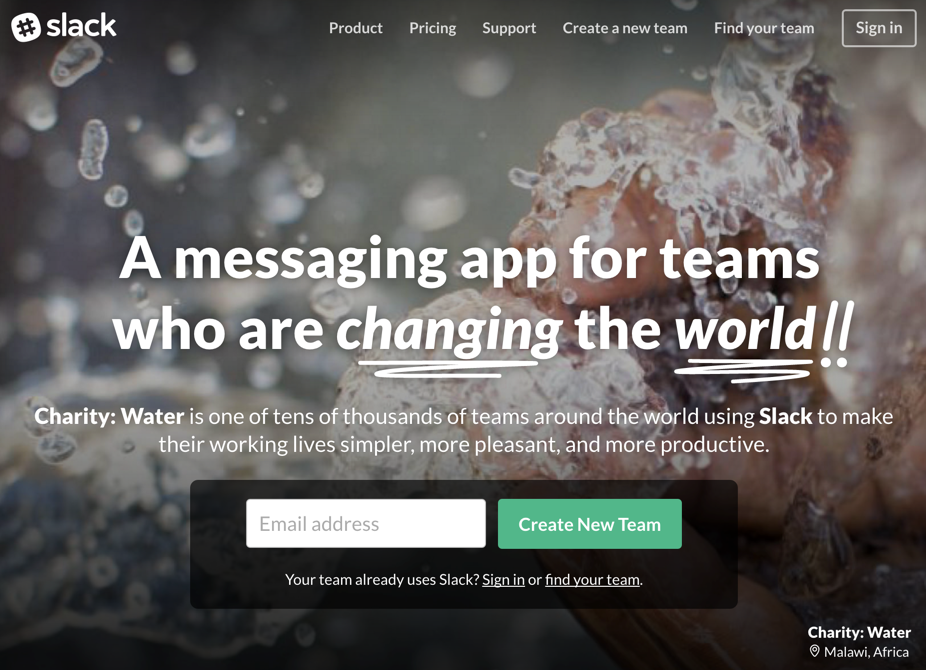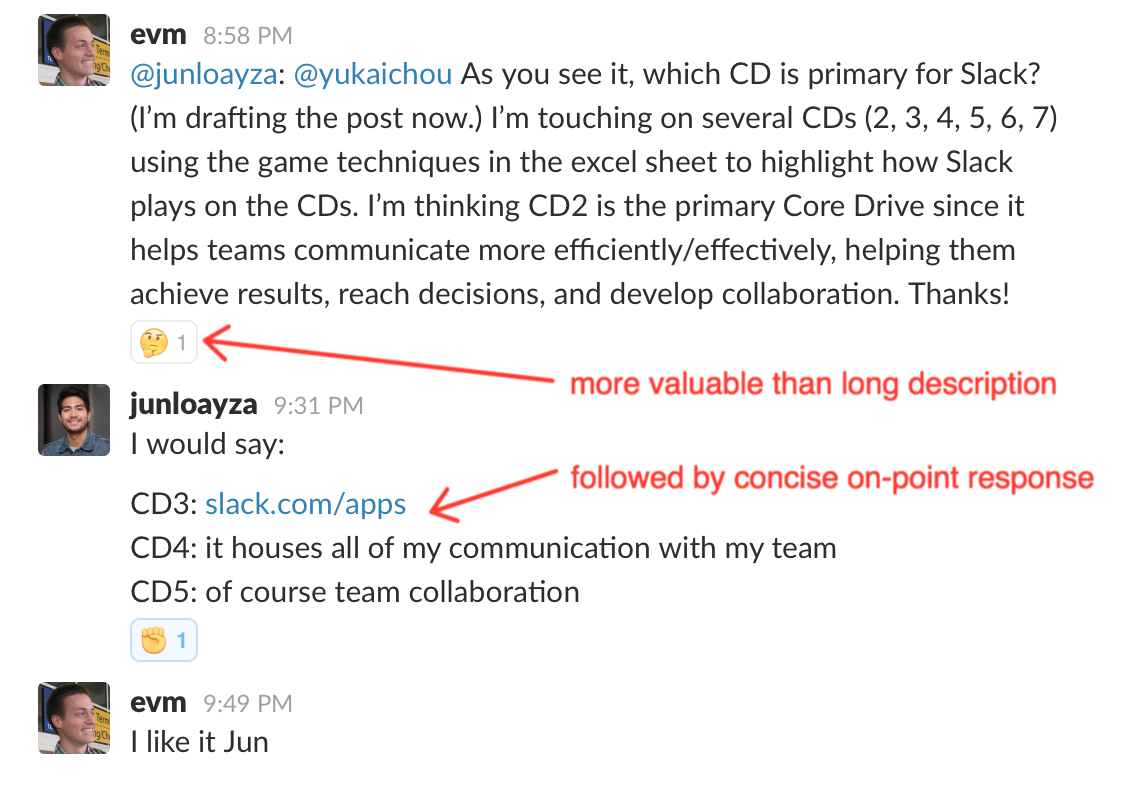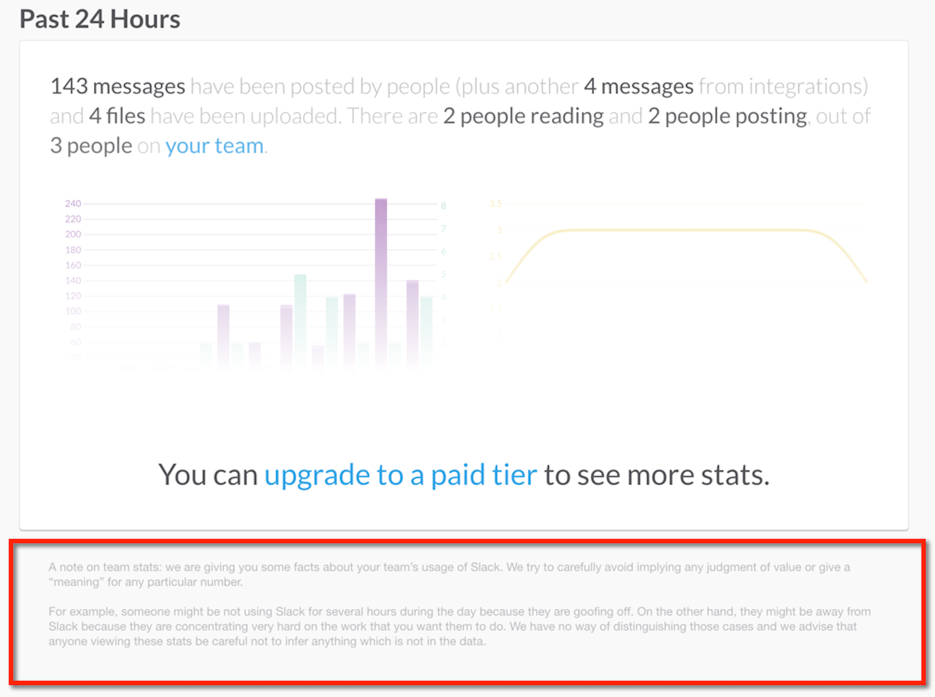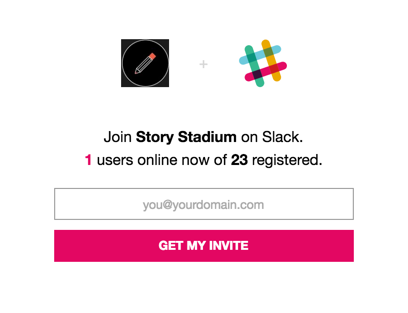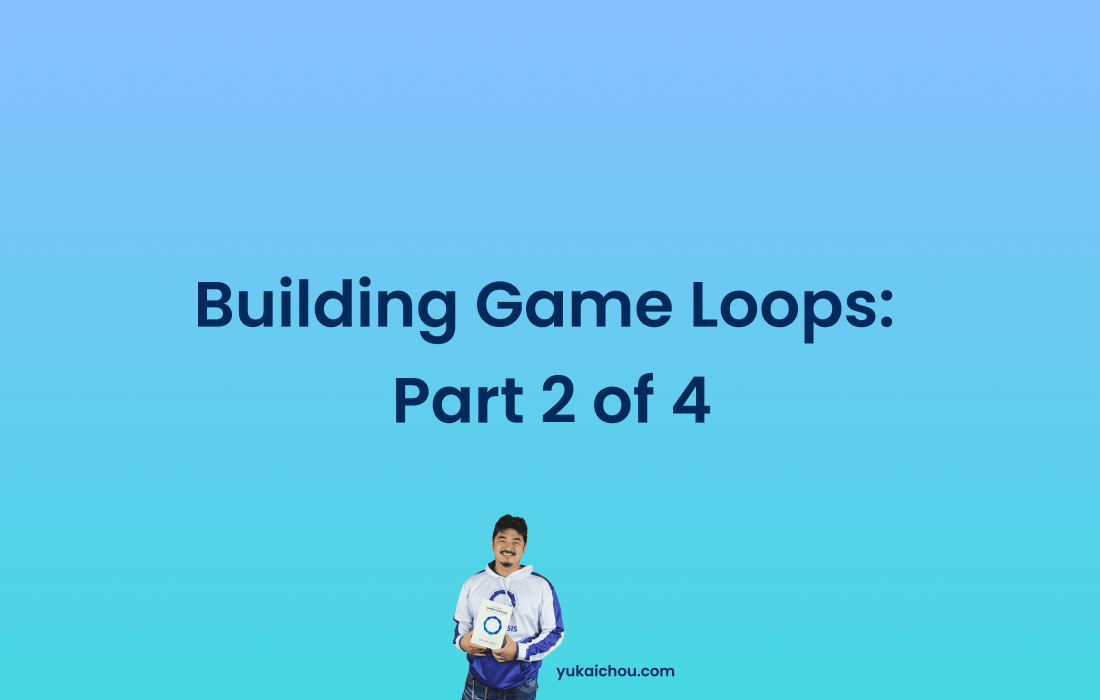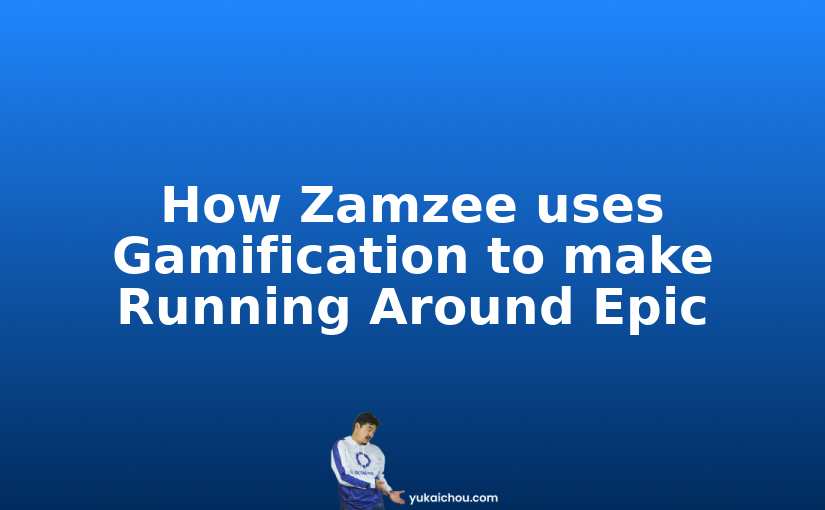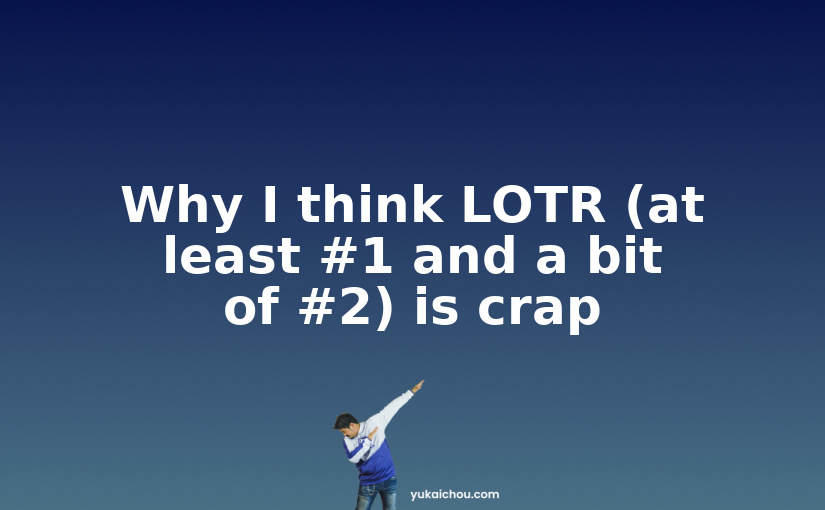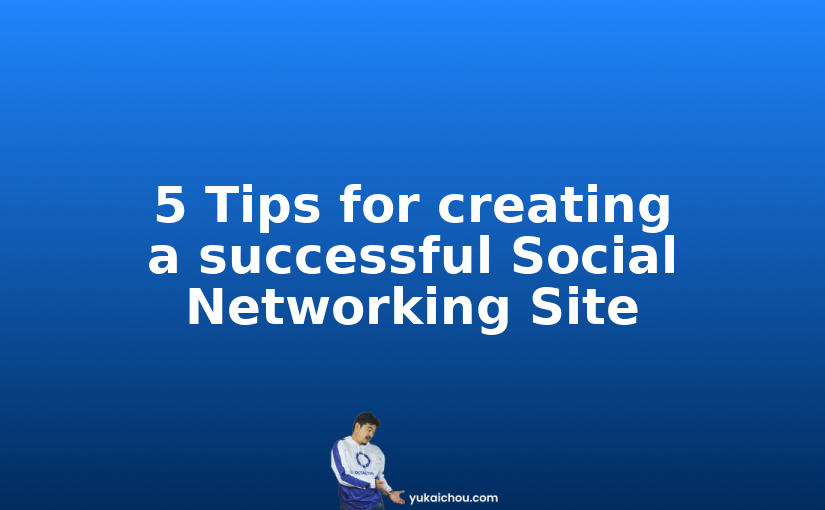I first used Slack with friends in a mastermind. Later, I created my own group to give and receive one-on-one feedback with other writers.
In the mastermind case, I downloaded Slack thanks to Core Drive 5: Social Influence & Relatedness (my friend sending the invite) with the aim of improving our group’s ability to stay connected and help one another (also CD5).
On the writing side, I was primarily motivated by Core Drive 3: Empowerment of Creativity & Feedback, with a focus on consistent, fluid communication with partners and collaborators to enhance my creative freedom.
In this post, I’ll be examining the primary Core Drives Slack plays on with a focus on Core Drive 5: Social Influence & Relatedness. I’ll begin with a discussion of the Black Hat techniques and finish with White Hat techniques.
Why We All Use Slack
If you were asked what Core Drive Slack plays to most, what would you say?
From Slack’s homepage, it’s pretty clear they know who they are:
Despite Slack’s pitches about making work less busy and saving time, Slack primarily succeeds though Core Drive 5: Social Influence & Relatedness.
It’s true that Slack helps teams achieve more (Core Drive 2: Development & Accomplishment), allows for impressive customization (CD3), and houses many teams’ overall communication (Core Drive 4: Ownership & Possession), but the cultural benefits and collaboration improvements possible with Slack take the motivational cake (CD5).
From home screen (“you can be like Charity: Water and tens of thousands of other teams”) through to the Endgame, Slack knows how to motivate its users and teams, whether it be through camaraderie or peer pressure.
Limits to Black Hat
In Octalysis, there are generally 3 Core Drives considered Black Hat: Core Drive 6: Impatience & Scarcity, Core Drive 7: Unpredictability & Curiosity, and Core Drive 8: Loss & Avoidance.
However, CD5 can also be black hat. Whenever you feel you should do something because others are doing it already, the black hat side of CD5 is in play: peer pressure. (Meanwhile, camaraderie is the white hat part of CD5.)
Wait, your company isn’t on Slack yet? (CD5) You use Hipchat? Chuckles. Their UI is sooo last year. Oh, you’re switching to Ryver to include your clients? That seems reasonable but we just spent a lot of time getting set up on Slack, and it’s awesome! (CD8)
Even though Slack can be fun to use (credit to the interface design team there!), the product itself incorporates several black hat motivators.
Chat threads in Slack (since it is a chat-based program) come quickly. The peer pressure of CD5 motivates quick responses, while CD8 drives users to interact in the conversation to avoid missing out on their chance to contribute.
The sidebar shows unread conversations in channels, groups, or direct messages in bold (CD7). Unless filtered, mobile notifications are frequent–these triggers (especially if they are predominantly black hat) can be wearying to the user over time.
Let’s look at some specific black hat techniques in Slack:
Guilting (CD5): Slack is chat-based. In any conversation, we as humans feel it is awkward not to respond. This doesn’t occur in real time with email. Advanced notifications play on this black hat technique. As Crew.co noted in this comparison with Hipchat, Slack doesn’t currently offer customized “away” or “do not disturb” statuses. It’s easy to understand how newly onboarded employees (or teams to Slack in general) would feel motivated to always be available for their managers, partners, and teammates. (Note that by customizing your notifications you can reduce the guilt you feel.)
Recruiter Burden (CD5): When trying anything new, the recruiter normally is invested and incentivized to showcase value to potential recruits. Sometimes, this can mean emphasizing benefits in an unbalanced way. In my case, I like to give new users a Head Start (CD2) by adding them to, say, the private Alpha Reading Team, and suggesting they get caught up on the last week’s worth of messages in that group.
Hurry Up and Wait (CD6/7): Imagine you just completed a task and shared with your team. Your next thought: but where is everyone to congratulate me? Below, my collaborator Jun does a nice job of fending off my curiosity with a reaction :thinking: emoji.
To Be Fair
To be consistent, I want to acknowledge that Slack is potentially very aware of the downsides of chat-based systems and the black hat motivators they’ve designed on top of their chat-based system (the do not disturb functionality was added in December 2015). I even found a fine-print explanation on Slack’s team stats page (evidence they are somewhere on the spectrum of acknowledging to caring deeply about this side of the coin):
The fine print reads:
…We try to carefully avoid implying any judgment of value or give a “meaning” for any particular number.
For example, someone might be not using Slack for several hours during the day because they are goofing off. On the other hand, they might be away from Slack because they are concentrating very hard on the work that you want them to do…
This notice could even demonstrate that the Slack team is considering how their product makes users feel. (Slack uses Slack, so in a sense they can better understand their customers–because they are themselves are users, too.) We know from Octalysis that too much Black Hat can lead to negative feelings toward a product and even burnout.
Slack will do well to monitor this closely. They don’t want the next business communications app to be able to tout how much less “Slack” they have to manage in the same way that Slack highlights how much less email management users and teams are burdened by after switching to Slack.
In this same vein, one of Cal Newport’s friends recently level-set with his manager blocks of time morning and afternoon when he’d like to have focused work time away from Slack.
Expectation management is crucial. When I worked in the Kitchen team at Target in 2011, I managed 35 vendors and collaborated with multiple internal teams. I let everyone know that unless something really was urgent, I would be responding to emails in 3-24 hours during my email blocks.
The Light Side
For one of my Slack teams, I recently switched over to the “Hoth” theme (I’m a Star Wars fan so this decision took less than 2 seconds once I was aware of the choice). This customization falls into CD3, as do all of the wonderful integrations available in slack.com/apps. As Amy Jo Kim describes, customization, personalization, and MODs are very empowering for teams aiming to get the best out of Slack and making the experience their own (CD4), and there are likely to be even better apps and integrations on the way.
But, since I focused on CD5 above, I’ll again focus on CD5 for techniques that play on the white hat part of our motivations.
Watercooler (CD5): #random is the only default channel alongside #general. The channel’s default purpose (non-work banter and watercooler conversation) immediately encourages banter and sharing. Informal connection improves working relationships.
Group Quest (CD5): The simple act of participating in a channel with a well-defined purpose can bring CD5 motivational boosts. My Alpha Reading Team knows they are the first readers of my novel (ahead of the also critical Beta Reading Team) and feel empowered to be a part of something potentially great. By the way, I recently learned a lot from Alvaro Oliveira in his Mixergy Course about onboarding remote team members. I think the Group Quest technique plays nicely with his sentiments there.
Elitism (CD5): This technique straddles white and black hat. Being invited to a private group within Slack promotes a feeling of positive exclusivity (a team within a team). Finding out that you weren’t invited might have the opposite effect (or induce you to figure out how to join that team). However you feel elitism plays, I nevertheless use it to my advantage when inviting writers to collaborate with me in Story Stadium. I use the Slackin app powered by Heroku to show potential collaborators the number of other writers already in the group.
Evergreen Combos (CD4): Because of archive and search functionality, value added (from witty comments to onboarding how-to’s) remain in a company’s Slack system.
3rd-Person Empathy (CD5): When users in a team through emojis or reactions weigh in on an idea or an update, camaraderie and collaboration can build within a team.
Daily Catch (CD7): I love Slack’s welcome-to-your-session messages. They’re cute.
Balancing White Hat and Black Hat
It’s clear to see how Slack balances the white hat (camaraderie) and black hat (peer pressure) techniques of Core Drive 5: Social Influence & Relatedness. The urgency of black hat with the motivational longevity of white hat coalesce to drive a product that I’m guessing many users and teams will enjoy for years to come.



